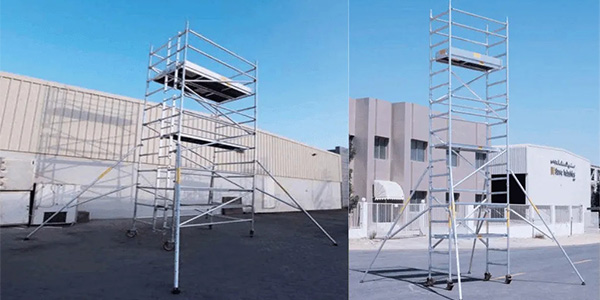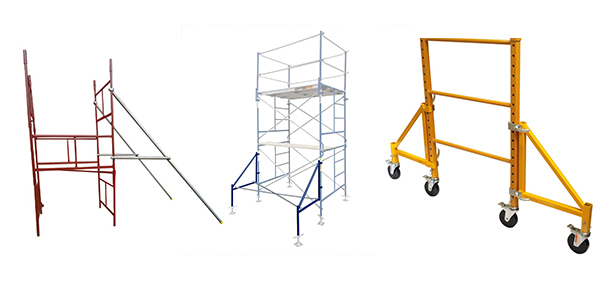What Are Outriggers on Scaffolding? A Safety Guide
May 10, 2025

Outriggers are structural components of scaffold frames that are added to the bottom of scaffolding units to provide increased stability. Outriggers can commonly be a beam or frame that extends from the legs of the scaffold, and would also either have casters or leveling jacks on them. Outriggers create a bigger base, or lateral support because they would decrease the center of gravity and make the scaffold less likely to tip on footprint., especially in taller scaffolds or scaffolds exposed to lateral force.
Often outriggers are confused with side-arms. Outriggers are added to scaffolds to provide more stability at the base, and side-arms are added at whatever working level to allow the worker to get as close to the work surface as possible like a wall. The terms are often confused, because they both communicate to provide assistance, but they perform distinctly different functions.
Outriggers play an important role in keeping scaffolds stable, particularly in higher risk situations. The Occupational Safety and Health Administration (OSHA) require that supported scaffolds that are more than 4 to 1 height-to-base widths be prevented from tipping with either guying, tying, bracing, or outriggers. For mobile scaffolds, a height to base width ratio of 2 to 1 or less must be used to avoid tipping.
Tall and narrow scaffolds: When the scaffold’s height is high in relation to the scaffold’s base width.
The need for outriggers depends on the scaffold’s configuration, type, and regulatory requirements. Key scenarios include:
|
Condition |
Outrigger Requirement |
Details |
|
Height-to-Base Ratio > 4:1 (OSHA) |
Outriggers or securing required |
Example: 5' wide scaffold, platform ≥20' needs outriggers or tying. |
|
Baker Scaffold (29" wide) |
Outriggers required for double/triple stacking |
Needed if platform >6' or stacking >3 sections (~18' high). |
|
Scaffold in Open Area |
4 outriggers needed |
Prevents tipping in all directions. |
|
Scaffold Near Wall |
2 outriggers may suffice |
Wall acts as outrigger on one side. |

Outriggers come in various types, each tailored to specific scaffolding needs. Understanding these options helps in selecting the right outrigger for a project:
|
Type |
Description |
Key Features |
Best Use Case |
|
Adjustable Outriggers |
Advanced features like emergency systems and sensors |
OSHA 1910.66, ASME A-120 compliant |
High-safety, complex projects |
|
Baker Scaffolding Outriggers |
Designed for narrow baker scaffolds with caster wheels |
Enhances mobility and stability |
Interior or small-scale projects |
|
Fixed Outrigger Systems |
Permanently set for long-term use |
Durable, low maintenance |
Building maintenance |
|
Transportable Outriggers |
Lightweight, mobile without counterweights |
Easy to move and set up |
Temporary or mobile setups |
|
Push-Thru Systems |
Quick connection to fixed stands for facade access |
Fast setup, modular |
Facade work, quick installations |
Proper installation and use of outriggers are crucial for scaffold safety. Follow these guidelines:
Outriggers enhance stability but are not a substitute for comprehensive safety measures. Best practices include:
Incorrect Installation: Failing to secure outriggers properly can lead to instability.
Overloading: Exceeding load capacity risks tipping or collapse.
Neglecting Inspections: Regular checks are essential to identify wear or damage.
Using Inappropriate Types: Mismatched outriggers reduce effectiveness.
Consult Experts: Seek advice from scaffolding professionals if unsure about requirements.
Follow Standards: Ensure outriggers meet OSHA, ASME, or local regulations.
Train Personnel: Comprehensive training enhances safety and compliance.
Plan Ahead: Incorporate outriggers into project planning for seamless integration.
Outriggers are indispensable for ensuring scaffold stability and worker safety. By widening the scaffold’s base, they prevent tipping, particularly for tall or narrow setups. Understanding when outriggers are required, selecting the appropriate type, and following best practices for installation and use are essential for safe scaffolding operations. By adhering to OSHA regulations, training personnel, and prioritizing safety, construction professionals can minimize risks and complete projects successfully.
Can outriggers be used on uneven surfaces?
Do outriggers eliminate the need for tying a scaffold to a structure?
OUTRIGGER SCAFFOLD(THRUST OUT)PLATFORMS —— NYC
When Are Outriggers Required On My Baker Scaffold? —— Blogger